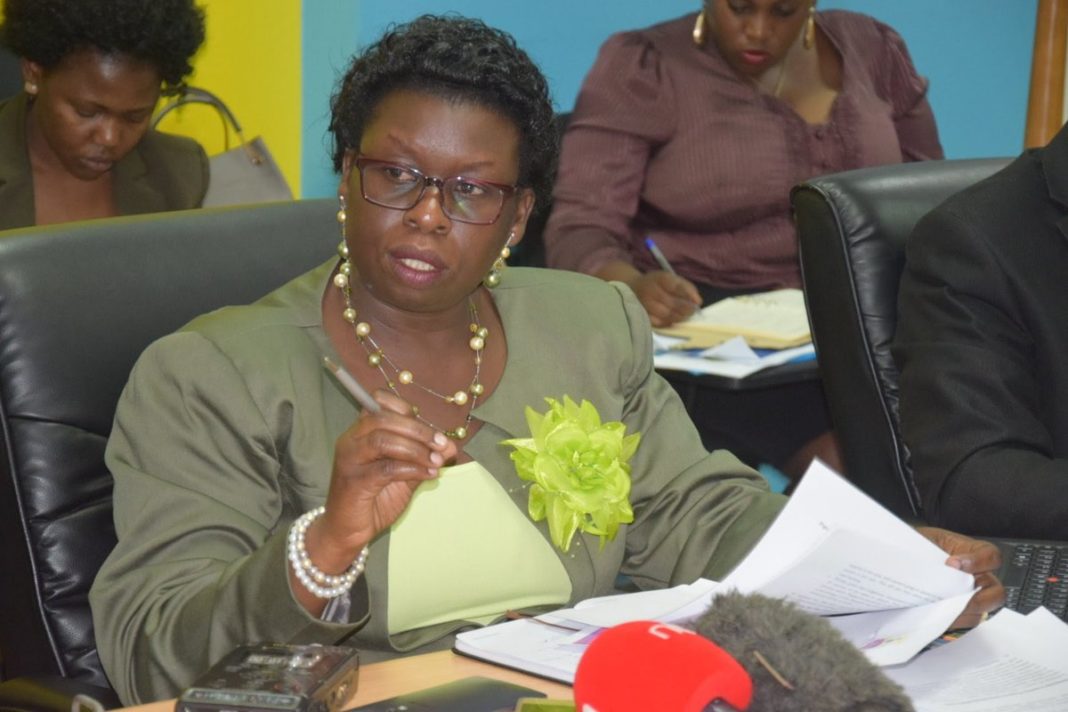Despite the tough economic times that persisted for much of the
2016/17 financial year, the Uganda Revenue Authority (URA) realised a revenue growth of 13.26 per cent, compared to the same period in financial year 2015/16, its Commissioner General General Doris Akol disclosed today as she released the annual revenue performance report for July 2016 to June 2017.
During the period under review, URA targeted to collect revenue worth Shs13, 177.15 billion but ended up collecting only Shs12, 719.63 billion. “In real terms, a total of Shs1, 488.78 billion was the additional revenue to the treasury compared to the past financial year,” Akol said as she read the report.
The Shs13, 177.15 billion target, Akol said was set based on the
projections that the gross domestic product (GDP) would grow at 5.0 per cent in the financial year 2016/17. But this, she said was not the case as it finally grew at 3.9 per cent, leading to the revenue shortfall of Shs236.69 billion. GDP is the total value of all goods and services produced within the country.
In the report Akol released at the URA Head Office in Kampala, she points out that corporation tax revenue had a shortfall of Shs197.5 billion as companies absorbed little credit to facilitate both the domestic and international trade, which are the main revenue generators. For instance, she says, imports during the 2016/17 financial year were expected to grow at 9.1 per cent but only grew by 7.1 per cent. That meant a fall in revenue collections.
The report further says that because of the constrained aggregate
demand in the economy, investors and traders decided to warehouse goods or re-export them to neighbouring countries like Kenya and Rwanda, which further affected customs tax collections. Customs tax makes up 82 per cent of total tax collections in Uganda.
Further the contracted aggregate demand, URA says, led to cash flow challenges that impacted negatively on withholding tax, Pay As You Earn as well as value added tax. “A number of taxpayers filed returns but made no payments during financial year 2016/17,” the report reads in part.
Akol in the report says that URA will harness key administrative
measures so as to collect Shs15, 062 billion for the financial year
2017/18 and that this includes fighting corruption, tax education,
risk management enhancement among others.
Regionally, for the financial year 2016/17, only the Rwanda Revenue Authority (RRA) collected taxes above target at 100.50 per cent followed by URA at 96.53 per cent. Kenya Revenue Authority (KRA) and Tanzania Revenue Authority (TRA) follow, collecting taxes at 96.53 per cent and 94.68 per cent respectively.
Looking at the year on year growth rates, the average EAC revenue performance was 11.8 per cent during the year 2016/17, with Tanzania’s TRA registering the highest revenue growth rate of 14.0 per cent while Burundi registered 8 per cent-the lowest.
On average EAC tax to GDP ratio was 15.1 per cent. KRA and RRA emerged the best performers at 19.3 percent and 15.3 per cent respectively. URA had 14.1 per cent while Burundi Revenue Authority (OBR) and TRA came last at 13.4 per cent and 13.2 per cent respectively.
Further, the average EAC tax to budget ratio was 57.6 per cent during the year 2016/17 with KRA contributing 71.4 per cent; URA raised 62.30 per cent while RRA posted 55.60 per cent. OBR and TRA contributed 50.50 per cent and 48.00 per cent to their national budgets.





